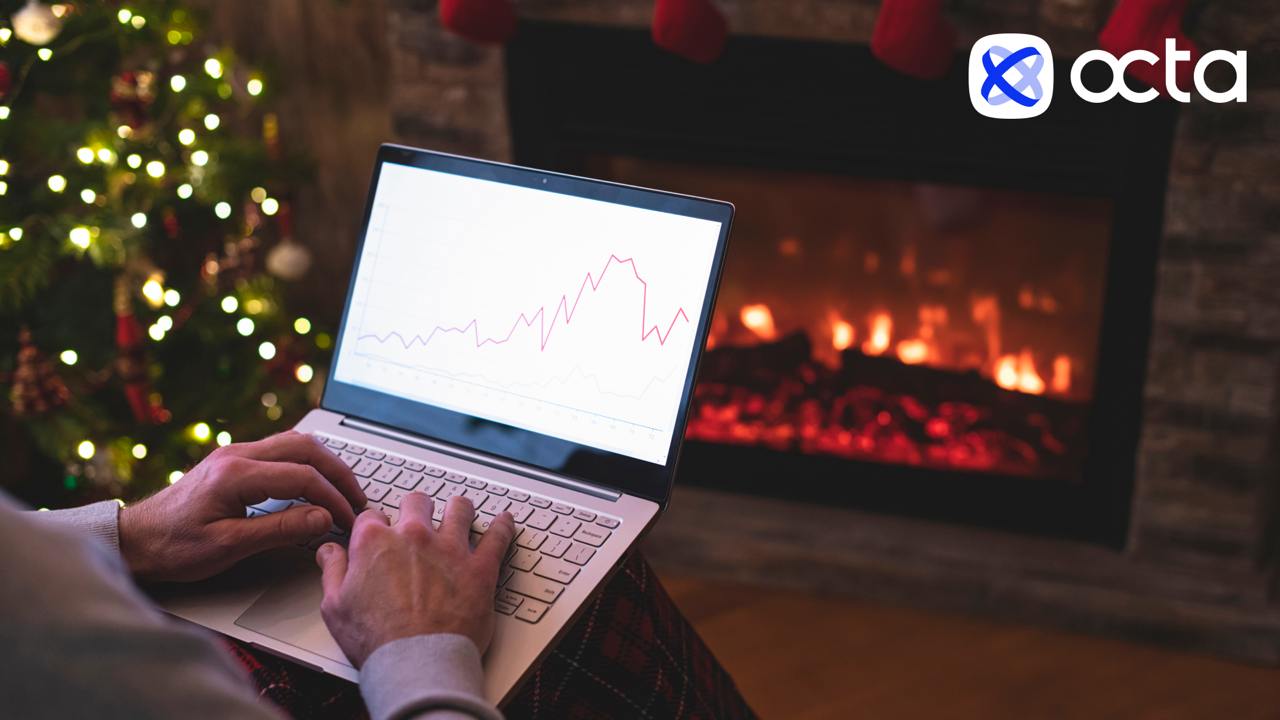
Understanding
the
Santa
Claus
Rally
The
Santa
Claus
rally
refers
to
a
pattern
of
rising
stock
prices
during
the
final
trading
days
of
December
and
the
first
two
days
of
January.
Yale
Hirsch,
founder
of
the
Stock
Trader’s
Almanac,
first
identified
this
phenomenon
in
1972.
Historical
analysis
from
1950
to
2022
shows
an
80%
occurrence
rate,
with
stock
prices
increasing
in
58
out
of
the
72
years
reviewed.
While
the
exact
timing
of
the
rally
can
vary,
its
strongest
impact
typically
occurs
in
the
last
week
of
December.
Some
analysts
suggest
the
trend
may
begin
as
early
as
Black
Friday,
while
others
link
it
to
increased
holiday
shopping
throughout
December.
Reasons
Behind
the
Santa
Claus
Rally
Several
factors
contribute
to
this
seasonal
trend:
-
Consumer
spending
surge.
The
holiday
season
boosts
retail
activity
significantly,
with
companies
in
essential
goods
and
consumer
sectors
often
seeing
their
stock
values
rise.
This
uptick
in
sales
during
Christmas
and
New
Year
directly
impacts
market
optimism.
-
Institutional
quiet
period.
Towards
the
end
of
the
year,
many
institutional
investors
take
a
step
back
from
active
trading,
creating
a
less
volatile
environment
dominated
by
retail
traders.
This
shift
often
injects
positivity
into
the
markets,
as
retail
investors
tend
to
approach
trading
with
more
optimism.
-
Seasonal
bonuses
and
festive
sentiment.
Year-end
bonuses
provide
traders
with
additional
capital,
often
reinvested
into
the
markets.
Combined
with
the
general
cheer
of
the
holiday
season,
this
creates
a
buoyant
atmosphere,
driving
demand
for
assets
across
various
sectors.
This year, expectations for a Santa Claus rally remain high. Bank of America analysts predict that the rally could kick off soon. Investor optimism following weaker-than-expected U.S. inflation data in November is driving the market. If inflation continues to decline and the Federal Reserve is willing to ease its monetary policy further, U.S. indices could reach new all-time highs, buoyed by steady economic performance and strong market sentiment.
Four
tips
for
traders
-
Focus
on
key
sectors.
Retail
and
consumer
goods
stocks
often
outperform
during
this
period.
Identifying
high-performing
companies
in
these
sectors
can
align
trading
decisions
with
market
trends.
-
Study
historical
patterns.
While
no
trend
is
guaranteed,
analysing
historical
data
can
offer
valuable
insights
into
potential
market
movements.
For
instance,
stock
indices
have
historically
gained
1–2.2%
during
the
Santa
Claus
rally.
-
Set
clear
goals.
Establishing
realistic
profit
targets
and
placing
stop-loss
orders
can
help
traders
protect
their
capital
while
participating
in
this
seasonal
trend.
- Practice risk management. The Santa Claus rally is largely sentiment-driven, making it less predictable than trends tied to economic fundamentals. External factors, such as geopolitical developments or unexpected economic data, can disrupt this pattern.
Hashtag: #octa
The issuer is solely responsible for the content of this announcement.
Support InfoStride News' Credible Journalism: Only credible journalism can guarantee a fair, accountable and transparent society, including democracy and government. It involves a lot of efforts and money. We need your support. Click here to Donate
